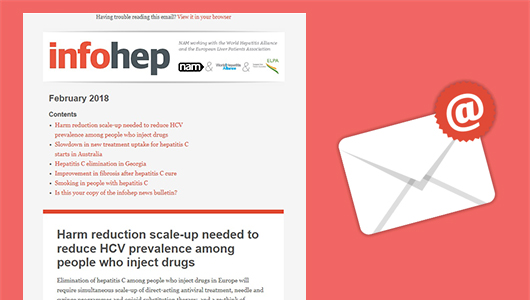If current trends in obesity and diabetes continue, at least 520 million people will be living with non-alcoholic fatty liver disease (NAFLD) in western Europe, China, Japan and the United States by 2030, according to modelling by the Center for Disease Analysis published in the Journal of Hepatology. The number of people with decompensated cirrhosis as a result of the most advanced form of NAFLD will more than double in each country.
NAFLD occurs when fat accumulates in the liver due to metabolic disorders including type 2 diabetes. NAFLD occurs most frequently in people who are obese.
Liver fat accumulation causes no symptoms in most people but in some it may eventually become severe enough to cause inflammation and liver damage (non-alcoholic steatohepatitis, or NASH). In a minority of people with NASH, liver damage will progress to end-stage liver disease (decompensated cirrhosis) or liver cancer (hepatocellular carcinoma). The risk of progressive liver disease is higher in older people, obese people or people with type 2 diabetes.
The study, carried out by the Center for Disease Analysis and researchers in eight countries, looked at the estimated total burden of NAFLD and the proportion of people with NASH or decompensated cirrhosis due to NASH, based on national epidemiological data. The study also estimated the future demand for liver transplants as a result of decompensated cirrhosis caused by NASH.
The researchers constructed a model of the total burden of these conditions in 2030 based on current trends.
By 2030, the model estimates that the prevalence of NAFLD will have risen in all countries, with the biggest numerical growth in China owing to population growth (61 million new cases). The prevalence of NASH will also rise, by almost half in all countries and cases of advanced NASH will make up a rising proportion of all NAFLD and NASH cases, as the population ages and the prevalence of type 2 diabetes rises.
In the United States the number of people with NASH and decompensated cirrhosis will increase by 161% to 376,140 cases. In 2030 alone, modelling suggests that 105,430 cases of decompensated cirrhosis will occur because of NASH. This enormous increase in cases of advanced liver disease will have serious implications for healthcare costs and the demand for liver transplants, the authors warn.
Deaths due to NASH (including deaths from cardiovascular disease) will increase most sharply in Italy, France and China, the modelling finds. Approximately 163,000 people will die as a result of NASH in China in 2030, and 83,000 in the United States.
These projections of disease and deaths could change if the global burden of obesity is altered by changes in diet, taxes on sugar, effective treatment, or if medication to reduce liver fat and arrest the progression of liver damage due to NASH become widely available.



Connect with infohep on Facebook: Keep up to date with all the latest news and developments.
Follow infohep on Twitter for links to news stories and updates from infohep.org. Follow us at www.twitter.com/infohep.
Follow all the infohep news by subscribing to our RSS feeds.